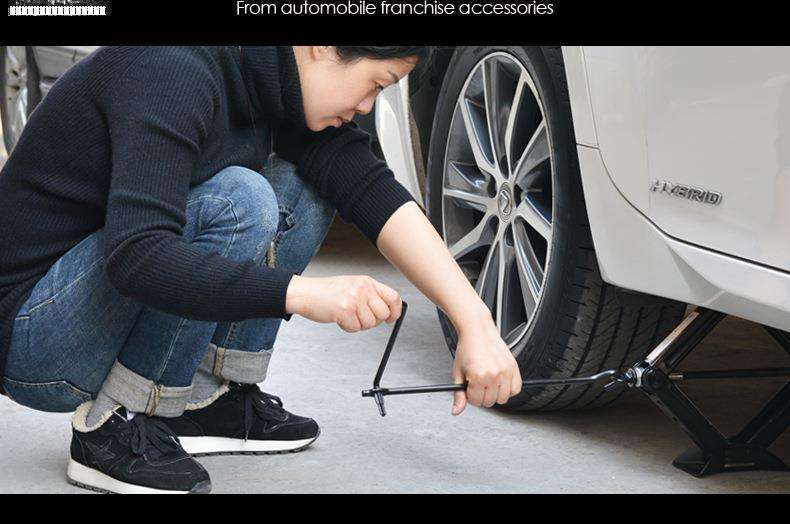Jacks are divided into mechanical jacks and hydraulic jacks with different principles.In principle, hydraulic jacks are based on PASCAL's principle, that is, the pressure of the liquid is uniform everywhere. In this way, in a balanced system, the pressure exerted on the smaller piston is relatively small, while the pressure exerted on the larger piston is also relatively large, which can keep the liquid at rest.So by passing the liquid, you can get different pressures on different ends, and you can get a transformation.The hydraulic jacks we commonly see take advantage of this principle to achieve the transmission of force.The mechanical jack adopts the mechanical principle. In the past, by pulling the handle and pulling the claw, the ratchet gap is turned, and the bevel gear drives the big bevel gear and makes the lifting screw rotate, so that the lifting sleeve can be lifted or lowered to achieve the function of lifting pull.But not as simple as hydraulic jacks.
The basic equation of static pressure (P =p0+ gh), when the external pressure p0 of a liquid contained in a closed container changes, the pressure at any point in the liquid will change by the same amount as long as the liquid remains in its original static state.This means that in a closed container, the pressure applied to the stationary liquid will be equally distributed to all points simultaneously.This is the static pressure transfer principle or PASCAL's principle.PASCAL's law is the fluid mechanics in which a pressure change in a portion of the stationary fluid in a closed container, due to the flow of the fluid, is transmitted in all directions with constant magnitude.PASCAL first formulated this law.Pressure is equal to the applied pressure divided by the area under force.According to PASCAL's law, applying a certain pressure on one piston in a hydraulic system will produce the same pressure increase on the other piston.If the area of the second piston is 10 times that of the first piston, then the force acting on the second piston will be 10 times that of the first piston, and the pressure on the two pistons will still be the same.This law was first proposed by Blaise PASCAL, a French mathematician, physicist and philosopher.This law has a very important application in production technology, hydraulic press is an example of PASCAL's principle.It has many uses, such as hydraulic braking.PASCAL also found that the pressure at any point in a stationary fluid is equal in all directions, that is, the pressure at that point is equal in all planes passing through it.This fact is also known as PASCAL's principle.




